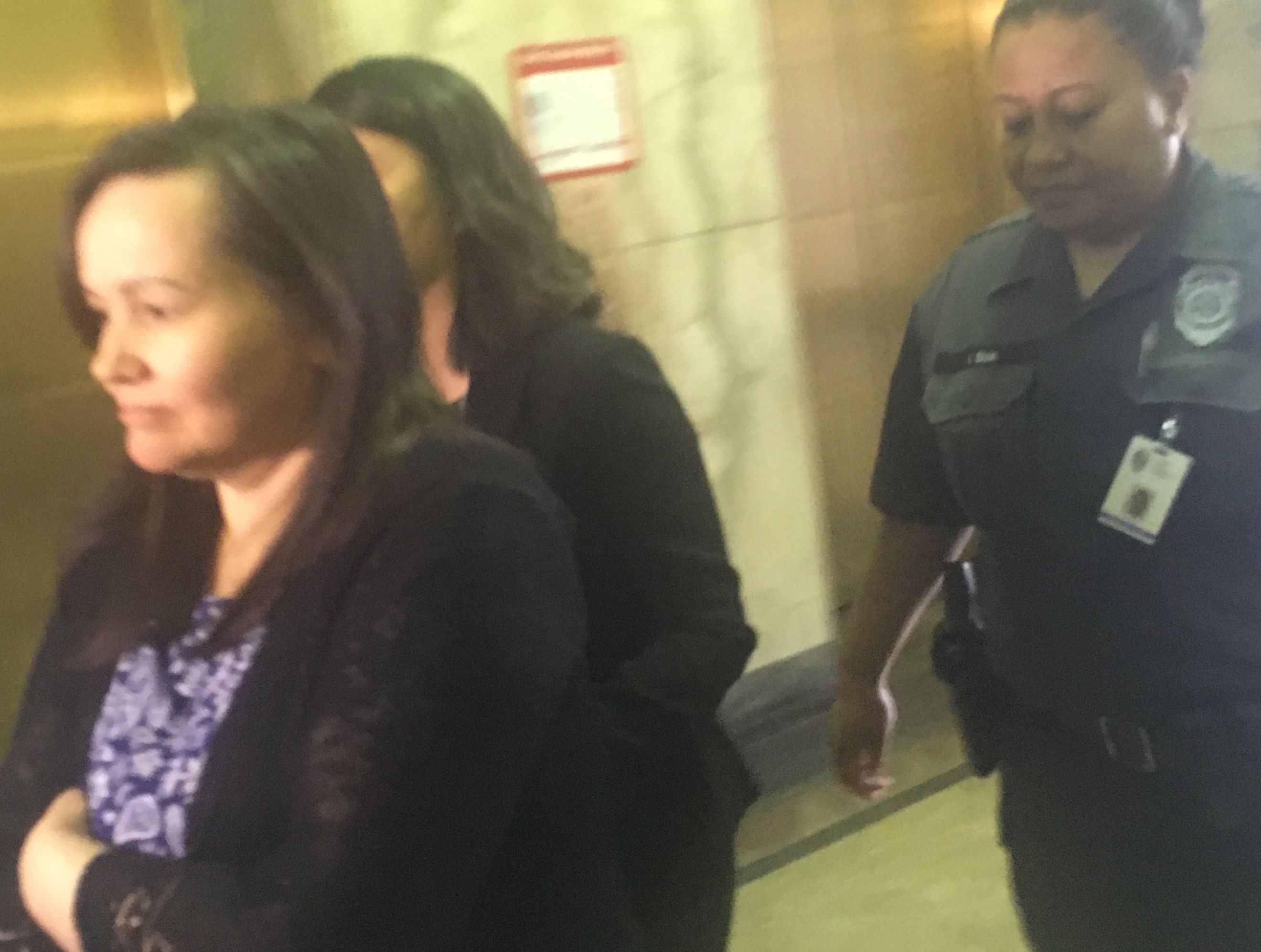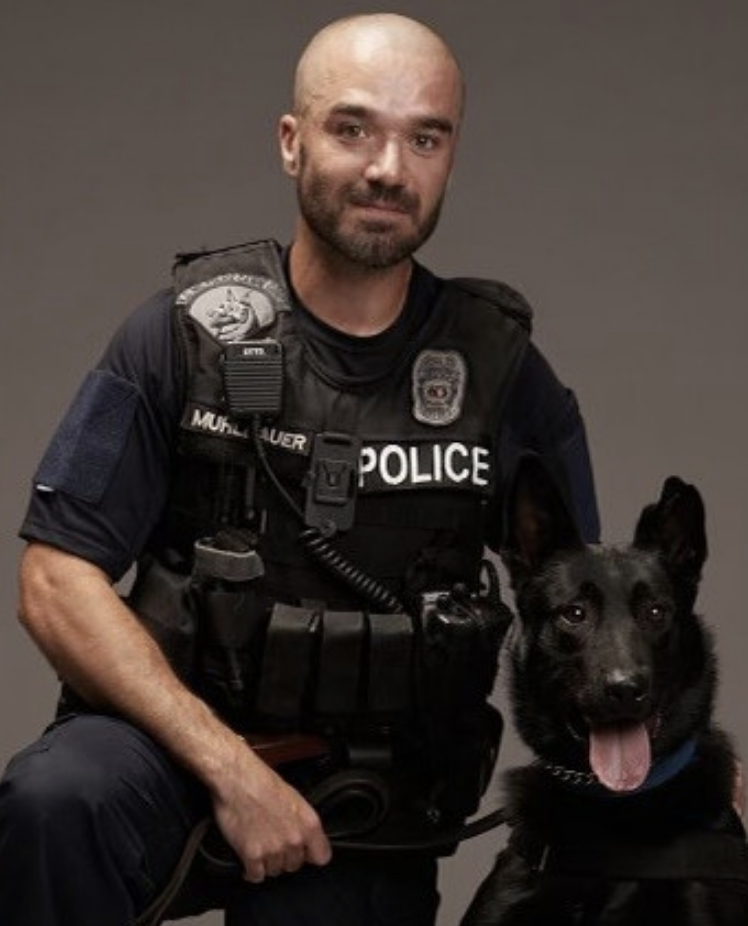Paul Thompson
Northeast News
Note: to better understand the following dispatch regarding the 2nd Degree Murder and Arson trial of Thu Hong Nguyen, the Northeast News strongly encourages readers to first catch up on our prior courtroom reports from Tuesday, July 17 and Wednesday, July 18.
The prosecution in the murder and arson trial against Thu Hong Nguyen worked to establish a pattern of insurance abuse during a bombshell fourth day of testimony on Thursday, July 19.
Nguyen stands accused of intentionally starting a deadly blaze in her Independence Avenue nail salon on October 12, 2015. The fire ultimately engulfed the three-story, mixed-use building that housed LN Nails & Spa, causing a structure collapse that killed two firefighters working the scene: John Mesh and Larry Leggio.
On July 19, prosecutors presented evidence aiming to prove that the Independence Avenue fire was intentionally ignited as part of an ongoing scheme that netted five businesses owned and/or operated by Nguyen $267,000 worth of insurance claims over a roughly eight-year period.
Forensic auditor Nicole Poirier testified that she was contacted by the departments of Alcohol, Tobacco, Firearms and Explosives (ATF) special agent Ryan Zornes in October of 2015 and asked to conduct a financial analysis of Thu Hong Nguyen. Poirier said that she worked over 400 hours on the case, pulling credit reports, property records, bank records, insurance records and tax records.
In the course of her work, Poirier focused her attention on five nail salons that have been owned by Thu Hong Nguyen and her family since 2008: 1) PS Nails in Uvalde, Texas; 2) AV Nails in San Antonio, Texas; 3) Perfect Nails in Grandview, Missouri; 4) USA Nails in Lee’s Summit, Missouri; and 5) LN Nails & Spa in Kansas City, Missouri.
What Poirier uncovered through financial records, drawn primarily from 18 financial institutions and five insurance companies, was a familiar theme: each of the businesses connected to Nguyen – either in her name or that of her ex-husband, son, or boyfriend – eventually succumbed to a catastrophic event before collecting an insurance payout that exceeded the initial purchase price of the business.
The following was revealed in rapid-fire succession, during a back and forth between Poirier and Jackson County Chief Deputy Prosecutor Dan Nelson:
-PS Nails, the only nail salon that Nguyen owned in her name, was purchased for $27,000 and remained open from December 2006 until July 2008. It suffered fire damage in July 2008 and collected a $30,286 insurance payment. The business never reopened.
-AV Nails was purchased for $38,000 in June 2009, with ex-husband Michael Nguyen and teenage son Cuong Nguyen listed as signatories. The business operated for four months. After a fire in October of 2009, the business received an insurance payout of $62,344. The business never reopened.
-Perfect Nails was purchased for $15,000 in October 2010, with Cuong Nguyen listed as the signatory. After 7.5 months in business, the nail salon increased its insurance policy on June 9, 2011. On June 11 the salon was burglarized, after which a $41,855 insurance payout was collected. The business never reopened.
-Nails USA was purchased for $20,000 in January of 2012. After operating for 18 months, there was a fire. The nail salon received an insurance payout of $51,873. The business never reopened.
-Finally, LN Nails & Spa was purchased for $20,000 in July 2014. According to witness testimony, Thu Hong Nguyen split the cost of the business down the middle with her then-boyfriend, Nhat Pham. In January of 2015, a fire in an above residential apartment led to flooding in the building. Pham filed an insurance claim and received a $40,000 payout. The business nevertheless remained open until October 2015, when a deadly fire destroyed the building in which it was housed. Pham filed an insurance claim and received an initial payment of $2,000. However, he was later advised by his attorney to withdraw the claim.
Poirier further testified that following a catastrophic event, companies have to provide information about how much money they would have received during the months when they were claiming lost income. According to her analysis, those figures were routinely inflated by Nguyen and her business partners.
“The defendant claims almost double what she was actually able to support,” Poirier said. “That tells me that she overinflated her receipts for the purpose of the insurance payout.”
During cross examination, defense attorney Molly Hastings called out Poirier for selective research, suggesting that Independence Avenue building owner Bo Tran had also racked up roughly $700,000 in insurance claims related to fire over a similar timespan as Nguyen.
Hastings also took issue with the insinuation that Nguyen had access to all of the $267,000 in insurance claims that have been paid out to her businesses since 2008. After all, she pointed out, nearly every nail salon Nguyen has worked at has – at least on paper – been owned by another individual. What’s more, Hastings also noted that, as has been demonstrated during Nguyen’s trial – insurance companies have an opportunity to investigate any insurance claims they feel are improper.
“All of these claims that we have seen to date; none of them except for the first were written to Ms. Nguyen,” Hastings said. “They don’t see a problem, and they are issuing compensation based on what they feel the claim is worth.”
“It makes sense,” Hastings continued. “The insurance company is not going to hand out money to people who are ripping them off, right?”
The day began with less dramatics, as most of the testimony focused on the 2013 fire at the Lee’s Summit nail salon, Nails U.S.A.
The first witness called to the stand on July 19 was Kirk Hankins, a former private fire investigator. Hankins investigated the July 25, 2013 fire that occurred at the Lee’s Summit nail salon run by Thu Hong Nguyen, which was discussed at length during the third day of the trial.
The previous testimony included that from Lee’s Summit Fire Department fire investigator Shawn Burgess, who initially classified the Lee’s Summit fire as accidental. Burgess testified that he later came to believe that the classification should have been undetermined. He acknowledged on the witness stand that he never interviewed the Lee’s Summit Police Department, the 9-1-1 caller, other employees of the nail salon or the insurance investigator during the course of his own investigation.
On Thursday, July 19, Hankins took the stand to offer his own interpretation of the Lee’s Summit fire, which he investigated on behalf of the State Farm insurance company.
Hankins testified that he wasn’t able to determine a cause of the fire: he considered many hypotheses in his investigation, but he ruled them all out through fire pattern analysis. He recommended that his client bring in an electrical engineer to eliminate the hypothesis that electrical failure was the cause of the fire.
In total, Hankins believed that the hypotheses related to electrical failure and incendiary fire needed “further testing and validation.” He ultimately classified the Lee’s Summit fire as undetermined, noting a lack of evidence of incendiary causation. According to Hankins, the reasons for the classification included the fact that items weren’t removed from the store prior to the fire, and that there was no evidence of an exotic accelerant; though there were ignitable liquids in that cabinet where the fire originated.
The second witness of the morning was former ATF engineer Michael Keller, who had previously provided testimony related to his analysis about the October 12, 2015 fire. Keller also got involved in the analysis of the Lee’s Summit fire, at the behest of special agent Ryan Zornes, the lead Certified Fire Investigator (CFI) for the Independence Avenue fire.
Keller conducted a simulation: he bought roughly a dozen power strips of the same make and model as the power strip found in the area of origin for the July 25, 2013 Lee’s Summit fire. While analyzing pictures of the power strip found in that blaze, Keller was surprised at its condition.
“It struck me during the analysis…we might have expected to see more damage,” Keller said.
Keller recalled that the researchers had access to one cabinet from the scene that was replicated for the laboratory fire testing. They conducted multiple versions of what were referred to as failure tests: some were conducted with the cabinet opened, some with it closed, and some with various materials inside the cabinet.
Keller was able to develop an expert opinion based on the testing, testifying that he did not believe that the power strip was the failure mechanism that caused the fire.
During cross examination, defense attorney Molly Hastings pointed out that Keller never conducted any fire tests with flammable materials in the cabinet. She also recalled prior testimony which suggested there were at least three items plugged into the power strip at the time of the fire, suggesting that Keller’s simulations did not appropriately mimic the Lee’s Summit fire. Keller responded that the items plugged into the power strip during the Lee’s Summit fire didn’t have an effect on the power strip because they likely weren’t turned on, which would mean that there was no current going into the strip.
“In order for something to have a failure, there has to be some sort of current flowing through it,” Keller said.
Next up was Trevor Maynard, a fire research engineer who has been working at the ATF since April 2015. Currently, Maynard is the Engineering Section Chief of the ATF Fire Research Lab.
Maynard conducted laboratory testing with the hope of determining the cause of the 2013 Lee’s Summit fire. That testing included: 1) identifying appropriate materials for desks, 2) observing effects of simulated power strip failure/evaluating variables (door position, contents), and 3) evaluating time required for fire to grow to a size similar to that described by witnesses.
At one point, the prosecution showed a photograph of a roll of paper towels physically touching the power strip used for the simulation. Maynard explained why that test was conducted.
“As soon as you start heating a thermally thin material, very quickly the entire material heats up,” Maynard said.
So what happened? According to Maynard, In all of the tests there was discoloration, but they did not observe a sustained ignition, even when a single piece of paper towel was draped over the power strip.
“A very thin piece of paper towel is among the easiest items to ignite,” Maynard noted.
Some of the fire tests included acetone, at the request of special agent Zornes, though those tests did not include a power strip. In one example, crumpled paper towels, foam nail supples in a plastic tray, one 1/3 full acetone bottle and one 1/3 full isopropyl bottle were burned with the cabinet roughly three inches open. In that test, full fire involvement occurred after 9 minutes and 57 seconds; cabinet damage similar to scene observations occurred after roughly 15 minutes.
That said, Maynard conceded that a test conducted with the same materials – but with a half-open cabinet door – failed to induce cabinet damage similar to scene observations.
Hastings seized upon the fact that all of the burn tests conducted with acetone in the cabinet were done without a power strip present.
“This is only attempted when you’re lighting it with a barbecue lighter, never with a power strip,” Hastings said.
The defense attorney also argued about a separate inconsistency: that the power strip was plugged into another power strip during the salon fire, while it was plugged into nothing in the subsequent experiment. Along those lines, Hastings reminded Maynard that at least three items were plugged into the power strip at the time of the Lee’s Summit nail salon fire. If that was the case, why didn’t Maynard plug anything into the power strip while conducting his follow-up experiments?
Maynard responded by reiterating the point made by Keller: that items plugged into the power strip would have no effect on the ignition sequence, and thus weren’t necessary for the sake of his experiments.
After a break for lunch, special agent Ryan Zornes was brought back to testify. Zornes had previously offered extensive testimony on Wednesday, July 18 that was primarily related to his investigation of the October 12, 2015 fire at LN Nails & Spa. On July 19, however, Zornes focused on his subsequent investigation into the Lee’s Summit blaze.
Zornes testified that three investigations were conducted, and three different conclusions were reached: Lee’s Summit fire investigator Shawn Burgess ruled the fire accidental; State Farm’s private investigator Kirk Hankins ruled the fire undetermined; and his own ATF investigation from December 2015, which concluded that the fire was incendiary in nature.
To reach the conclusion that the Lee’s Summit fire was incendiary, Zornes ran through six hypotheses: 1) Failure of power strip light circuit, resulting in ignition of lightweight combustibles; 2) Failure of power strip through leakage current; 3) Failure of other electrical appliances (This one was eliminated before lab testing); 4) Ignition of ignitable liquid (acetone); 5) Ignition of lightweight combustibles; and 6) Intentional ignition of nail bath.
While Zornes was able to disprove the potential accidental causes through lab testing, he testified that his team was unable to disprove all three ignition scenarios. Thus, they classified the fire as incendiary.
For the next dispatch from Thu Hong Nguyen’s trial, check back in with the Northeast News soon.




















